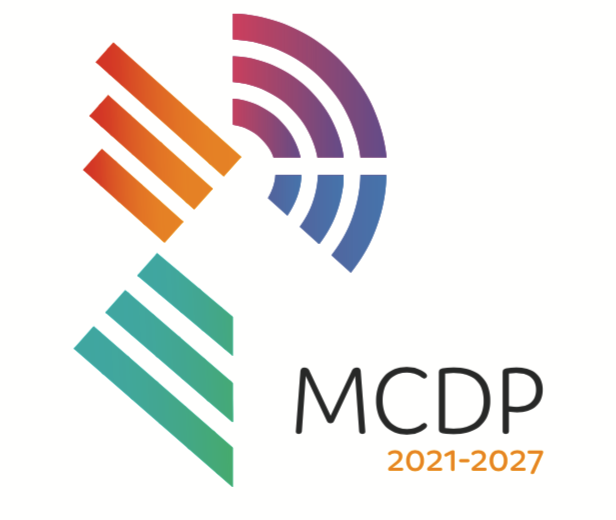A.01 Development Plan Mandatory Objectives
Dúnta3 Sam, 2021, 08:59 - 3 Sam, 2021, 09:00

Development Plan Mandatory Objectives
In accordance with Section 10(2) of the Planning & Development Act 2000 (as amended), each Development Plan shall include objectives for:
- the zoning of land for the use solely or primarily of particular areas for particular purposes (whether residential, commercial, industrial, agricultural, recreational, as open space or otherwise, or a mixture of those uses), where and to such extent as the proper planning and sustainable development of the area, in the opinion of the planning authority, requires the uses to be indicated;
-
the provision or facilitation of the provision of infrastructure including:
- transport, energy and communication facilities,
- water supplies, and waste water services (regard having been had to the water services strategic plan for the area made in accordance with the Water Services Acts 2007-2014),
- waste recovery and disposal facilities (regard having been had to the Waste Management Plan for the area made in accordance with the Waste Management Acts 1996-2013, and
- any ancillary facilities or services;
-
the conservation and protection of the environment including, in particular, the archaeological and natural heritage and the conservation and protection of European sites and any other sites which may be prescribed for the purposes of this paragraph;
- the encouragement, pursuant to Article 10 of the Habitats Directive, of the management of features of the landscape, such as traditional field boundaries, important for the ecological coherence of the Natura 2000 network and essential for the migration, dispersal and genetic exchange of wild species;
-
the promotion of compliance with environmental standards and objectives established:
- For bodies of surface water, by the European Communities (Surface Waters) Regulations 2009;
- for groundwater, by the European Communities (Groundwater) Regulations 2010; which standards and objectives are included in river basin management plans (within the meaning of Regulation 13 of the European Communities (Water Policy) Regulations 2003);
- the integration of the planning and sustainable development of the area with the social, community and cultural requirements of the area and its population;
- the preservation of the character of the landscape where, and to the extent that, in the opinion of the planning authority, the proper planning and sustainable development of the area requires it, including the preservation of views and prospects and the amenities of places and features of natural beauty or interest;
- the protection of structures, or parts of structures, which are of special architectural, historical, archaeological, artistic, cultural, scientific, social or technical interest;
- the preservation of the character of architectural conservation areas;
-
the development and renewal of areas, identified having regard to the core strategy, that are in need of regeneration in order to prevent:
- adverse effects on existing amenities in such areas, in particular as a result of the ruinous or neglected conditions of any land,
- Urban blight and decay,
- anti-social behaviour, or
- A shortage of habitable houses or land suitable for residential use or a mixture of residential and other uses;
- the provision of accommodation for travellers, and the use of particular areas for that purpose;
- the preservation, improvement and extension of amenities and recreational amenities;
-
the control, having regard to the provisions of the Major Accidents Directive and any regulations, under any enactment, giving effect to that Directive, of:
- Siting of new establishments,
- Modification of existing establishments, and
- Development in the vicinity of such establishments, for the purposes of reducing the risk, or limiting the consequences, of a major accident;
- the provision, or facilitation of the provision of services for the community including in particular, schools, crèches and other education and childcare facilities;
- the protection of the linguistic and cultural heritage of the Gaeltacht including the promotion of Irish as the community language, where there is a Gaeltacht area in the area of the development plan;
-
the promotion of sustainable settlement and transportation strategies in urban and rural areas including the promotion of measures to:
- reduce energy demand in response to the likelihood of increases in energy and other costs due to long-term decline in non-renewable resources,
- Reduce anthropogenic greenhouse gas emissions, and
- Address the necessity of adaptation to climate change;
In particular, having regard to location, layout and design of new development;
- the preservation of public rights of way which give access to seashore, mountain, lakeshore, riverbank or other place of natural beauty or recreational utility, which public rights of way shall be identified both by marking them on at least one of the maps forming part of the development plan and by indicating their location on a list appended to the development plan, and
- landscape, in accordance with relevant policies or objectives for the time being of the Government or any Minister of the Government relating to providing a framework for identification, assessment, protection, management and planning of landscapes and developed having regard to the European Landscape Convention convened in Florence on 20 October 2000.